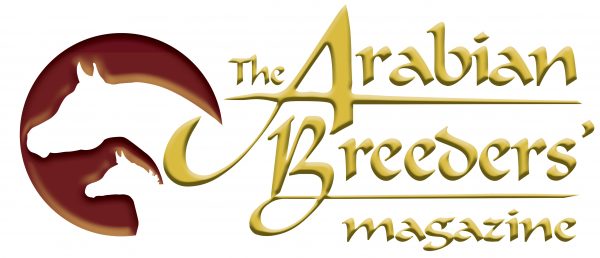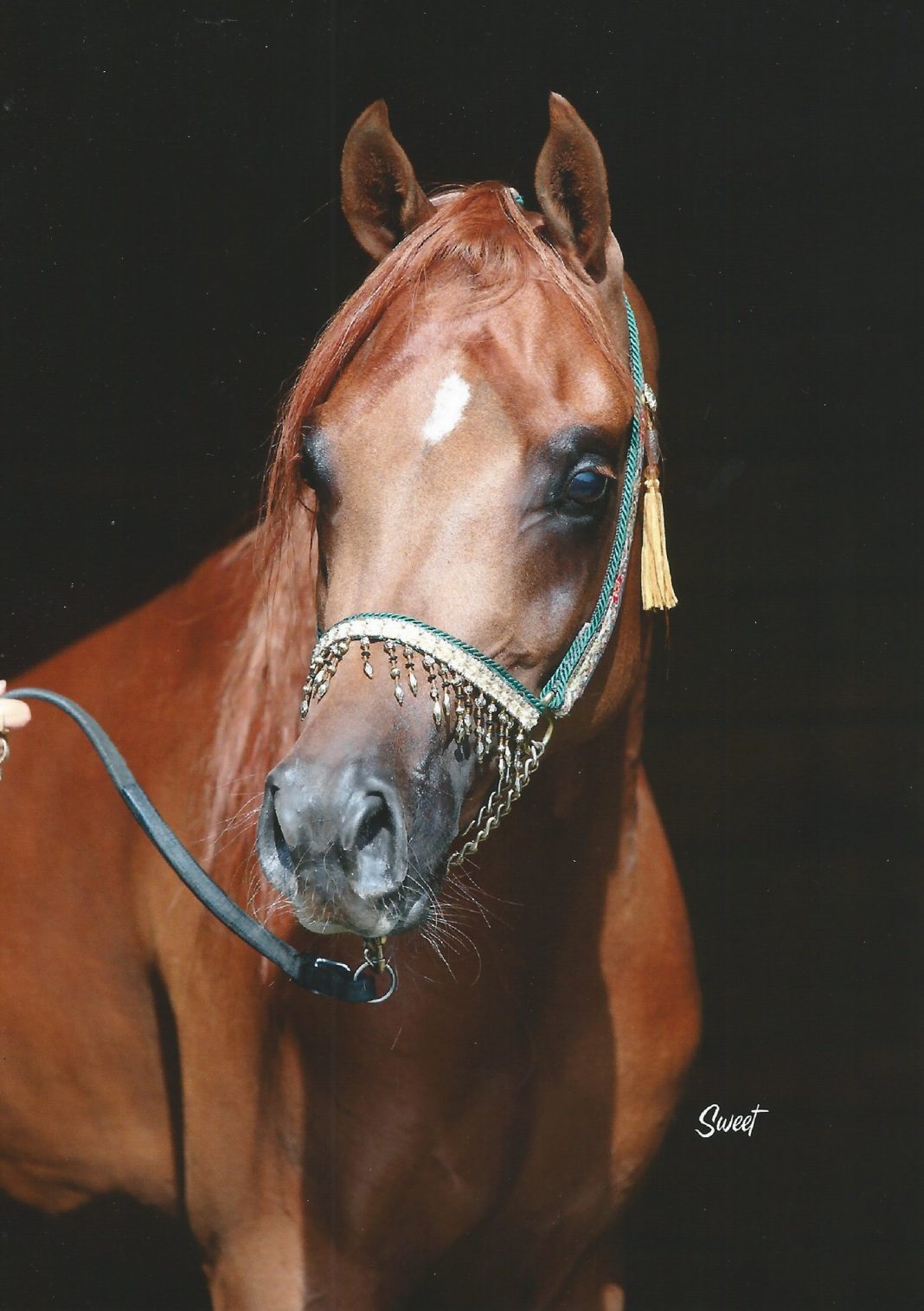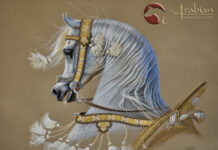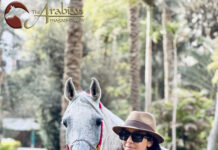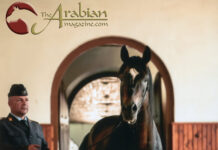The Breeders Interview – Tucana Arabians, UK
In every edition of The Arabian Breeders’ Magazine, we speak to a selection of breeders from around the world about their experiences and successes with their breeding programme. We are delighted to share some of these incredibly insightful features online.
The Arabian Breeders’ Magazine (TABM): Please share with our readers a short background of your farm.
Andrea Taylor, Tucana Arabians, UK: As a young girl, I had my ponies for gymkhanas and show jumping, and was bought up with thoroughbreds. I had a lovely homebred half-Arabian mare but my dream was to have purebred Arabian horses. My part-bred was getting on, so I was looking for a youngster to bring on ready for when she went into retirement. In 1992, I got my hands on my first Arabian, a weanling filly originally purchased for Arab racing. This went by the wayside once I discovered the showing, although my husband, Paul, would have preferred racing to showing!
I lost my part-bred to colic and my Arabian filly was only a yearling, so we purchased our first mare. We decided to put her in foal in 1996 and we chose Carmargue (White Lightning x Velvet Shadow). The Arabian addiction had begun!
In 1997 we purchased our first stallion, Hakka (Al Hakkim x Kyrenia), and Tucana Arabians was formed. This is a family run stud and now includes our daughter, Reshea, who became a big part of our team when she finished college after gaining A levels in all three of her subjects.
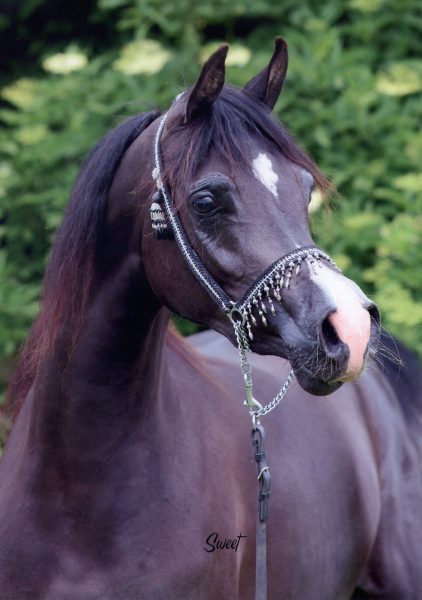
FS Velvet. Credit Sweet Photography.
TABM: What have been the bloodlines that you have focused on, and why did you choose them? Has this focus changed over the years?
Andrea: Our preferred bloodlines are focused around those of Versace (Fame VF x Precious as Gold), El Shaklan (Shaker El Masri x Estopa) and Sanadik El Shaklan (El Shaklan x Mohena).
Versace was a horse I had admired and followed, along with his progeny, over the years. In 2002, we were eventually lucky enough to purchase one of his beautiful daughters, La Dolce Vita (ex Bint Bint Mierka by Crystaladdinn). Not only are his stock beautiful to look at, they have the wonderful temperament too, something that both Paul and I feel is very important.
Coming in as a complete novice, I thought safer to pick a successful horse that was a well established sire and so used Carmargue as he was a popular stallion at the time and a lot of the bigger breeders in the UK were using him. I admit that I really didn’t know enough as to what crossed best with what, but you have to start somewhere. It is always harder on a restricted budget, but I think it’s important to pick the best you can, rather than something because it is cheap; I personally would rather not breed than do that. We still have a couple of mares with Carmargue in their pedigree, so maybe we haven’t had a total turnaround from our beginning.
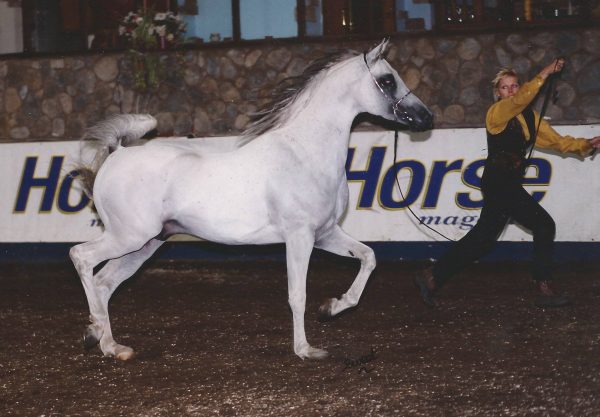
Hakka. Credit Tucana Arabians archives.
TABM: What were your breeding goals when you first started? Have they changed over the years?
Andrea: Our goal has always been to breed for type and temperament. I love a beautiful head – to me, that’s what having an Arabian is all about – but I do think they should also be correct, functional horses that are capable of any discipline, even if we choose to focus on in-hand. I guess this hasn’t really changed, but there is always room for improvement. I always knew the type of Arabian I wanted to breed and have looking out of my stables.
TABM: Please share key moments that stand out in the early stages of your breeding programme?
Andrea: The most important thing, and a turning point for us, was introducing Versace blood to our breeding programme as this was to become our foundation and defined the whole direction of our stud. Things moved up a gear when we purchased the fantastic Versace son, Vervaldee (ex Giavanna by NV Beau Bey), as a foal. He turned out to be an incredible sire and not only did he have a big impact on Arabian horses in the UK but also those in Europe and the Middle East. We still own three of his offspring.
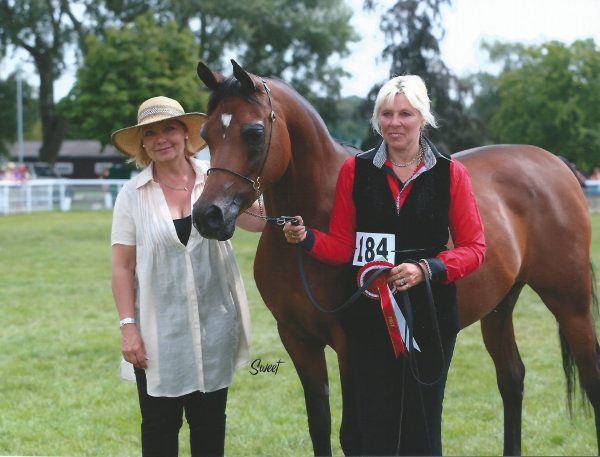
La Dolce Vita, or foundation mare, winning at British Nationals. Credit Sweet Photography.
TABM: When was it that you realised that you were a successful breeder? And what, in your opinion, defines a ‘breeder’?
Andrea: I guess I hadn’t really thought about it until being asked for my contributions to this feature! I think I realised that we must be getting something right when people started to take an interest, and compliment us, on our breeding programme. It’s not until you stop and think about how far you’ve come that you actually realise your achievements.
I think that a true breeder has focus and strives to improve on the look and the bloodlines that they favour, and they carefully select a good outcross when bringing in new blood. While the latest fashion plays a part, it should compliment existing stock.
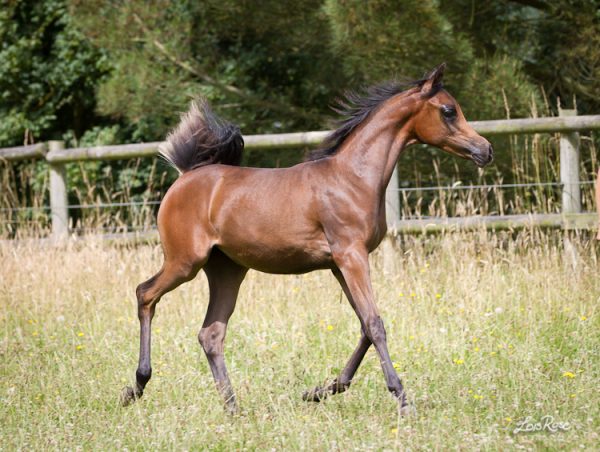
Venizwayla. Credit Lois Rose.
TABM: As a breeder, how do you feel about the showing world? Do you think that changes are needed to celebrate breeders more?
Andrea: Hmmm, the showing world today… Where does one start! Without doubt, there are some amazing horses out there. Unfortunately, in my opinion, politics play too big a part in it all. Sometimes the focus appears to be about the people instead of the horses. To outsiders, it does appear a bit of a circus; don’t get me wrong, I love a flamboyant horse, but I hate seeing a horse shanked senseless and circled all of the time.
We should be encouraging newcomers to want an Arabian horse, whether it is to show or just have as a family horse. The Arabian is versatile. We need new people to create a market for our beautiful breed. With it seeming to be a professional-only scene these days, it’s putting people off, thus leading to less demand.
Amateur handler classes are huge in America, and owners often compete in alternative classes at the same shows as the professionals with their horses. I think this may be a good thing to include in the UK.
One good thing for a breeder is, if you breed a good horse and it goes on to do well, you still get some recognition, even if it is someone else promoting it.
TABM: Do you think that breeders are a dying breed, pardon the pun?
Andrea: Yes, I do think we are losing a lot of true breeders as for some, it is about making a quick profit by just going with the fashion of the moment. I think those days are long gone, clearly evident by some of the very low prices that the progeny of these expensive stallions are fetching. I have always been told it’s easier to buy than breed, something I think is very true.
TABM: Do you think that breeders and dedicated breeding programmes still have a place in the world today?
Andrea: Most definitely, as they are ones that I think are always trying to move forward, to improve their stock, and are thinking ahead for the future of the breed. People have to realise that things don’t happen overnight and that it takes years of planning. You only have to look at Om El Arab and their dedicated breeding programme and what they have achieved; I think they are an excellent example of what are true and very successful breeders.
If you take a look at the situation in Poland, and you realise we are seeing the potential loss of decades of knowledge, this is not good. Who knows what direction things will take with random choices? Of course, at some point there will be a lucky fluke superstar born, but creating a legacy is more than a one off.
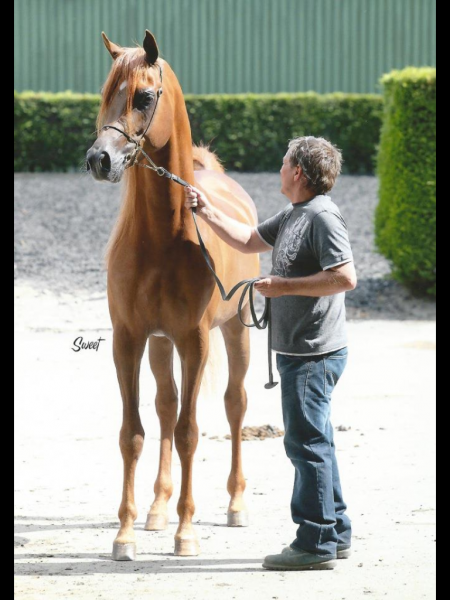
Vivegas with Paul. Credit Sweet Photography.
TABM: Over the years, what have been your key successes, perhaps the ones that define your farm?
Andrea: Over the years we have been lucky enough to build up a nice collection of mares, either carefully selected or homebred. Having good broodmares is vital, and so many seem to forget the importance of the mare.
A key moment for us was breeding Vivegas (Vervaldee x La Dolce Vita), our double Versace son. With his intense pedigree, he has proved himself a sire and he is one of the most successful sires in the UK. He has produced many multiple-champion offspring, including international and national champions.
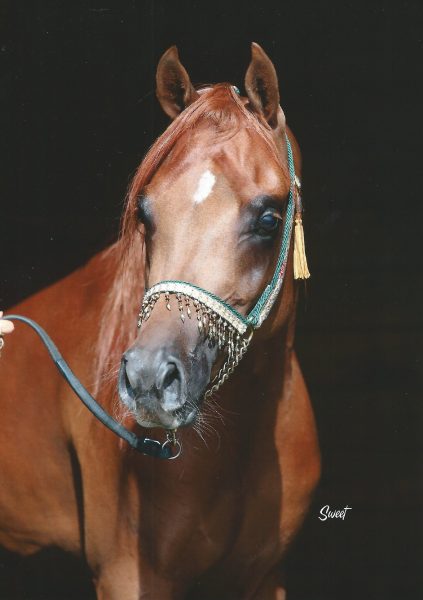
Marsevarno. Credit Sweet Photography.
TABM: And finally, what is next for you and your breeding programme?
Andrea: To carry on moving forward, and create our own legacy of Arabian horses. As for our goal – to breed a world champion; well you have to aim high!
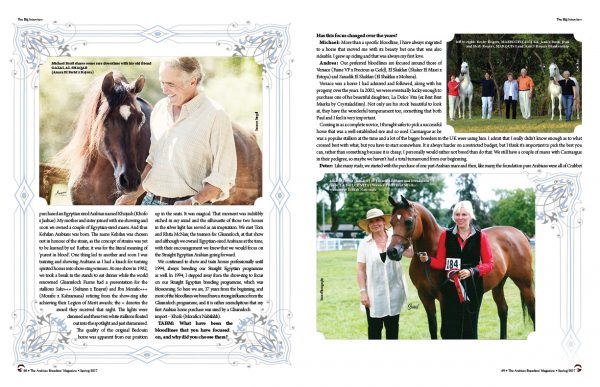
First printed in The Arabian Breeders’ Magazine Volume I Issue III March 2017. To enjoy further content such as this, please visit The Arabian Magazine Shop.
